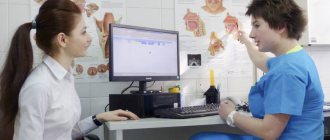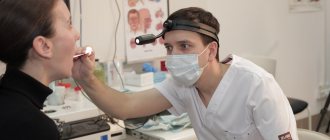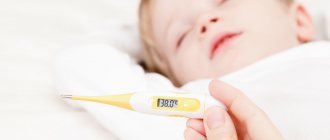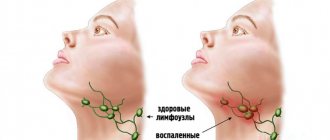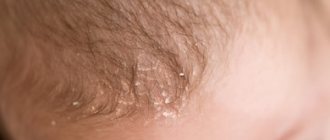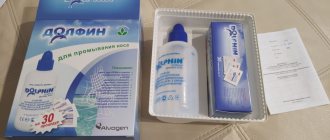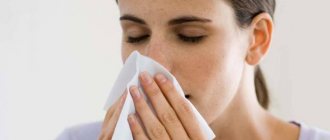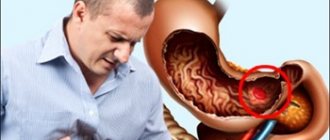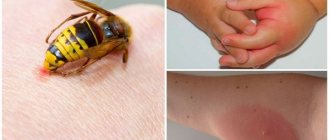Rhinitis, or, as it is more simply called, a runny nose, is an inflammation of the nasal mucosa, causing difficulty in breathing freely through the nose.
Author:
- Galkin Alexey Vladimirovich
ENT pathology expert
(Voted by: )
Rhinitis , or, as it is more simply called, a runny nose, is an inflammation of the nasal mucosa, which makes it difficult to breathe through the nose. The infectious process is characterized by copious mucous discharge from the nose, congestion, sneezing, a feeling of squeezing in the bridge of the nose, loss of smell, and headache. This is a common disease: it accounts for up to a third of all ENT diseases in childhood. Even a newborn can get rhinitis; the disease has no age restrictions.
With frequent episodes of recurrence of rhinitis, the child’s general, including psychological, health suffers, his performance at school decreases, and complications may arise (otitis media, sinusitis, bronchitis, etc.). It is important to prevent the disease from exacerbating and becoming chronic, so at the very beginning of the development of a runny nose, you should consult a pediatrician. There are several types of rhinitis. When making a diagnosis and prescribing treatment, one must proceed from the specifics of its course and the causes of its occurrence. Only a doctor can prescribe effective therapy that will quickly relieve the child of the disease, will not cause adverse reactions and will prevent frequent relapses.
Manifestations of acute rhinitis in newborns and infants
Acute rhinitis is especially unpleasant in the first months of life - in infants, the nasal passages are still very narrow, they do not know how to blow their nose on their own, because of this, it is difficult or impossible for the child to breathe through the nose, even with slight swelling of the mucous membrane. As a result, the process of feeding and sleep is disrupted. The child breathes frequently and shallowly through his mouth, is restless, his temperature rises, dacryocystitis (inflammation of the lacrimal sac) may develop, and weight loss may begin. Continuous breathing through the mouth, resulting from the inability to breathe through the nose, can cause loose stools and vomiting.
Why do children often get runny noses?
The frequent occurrence of rhinitis in children is caused by several reasons, which are determined by the age-related characteristics of the body, including:
- an unformed immune system that is unable to fully repel harmful attacks from viruses, bacteria and allergens;
- the nasal passages are short and narrow, so even minor swelling of the mucous membrane disrupts normal breathing partially or completely;
- children’s inability to blow their nose, so pathogenic mucus continues to be in the nose, thereby creating a favorable environment for viruses and microbes.
Rhinitis appears as a response of the child’s body to the penetration of the virus inside, and the incubation period can last from several hours to several days.
Symptoms of acute rhinitis in older children
In older children, acute runny nose develops quickly. At first, a feeling of unpleasant burning, tickling, and itching in the nasal cavity is noticeable. Then frequent mucous discharge begins, sneezing, congestion, headaches, tearfulness, decreased perception of smells, a feeling of squeezing in the bridge of the nose, irritation on the skin under the nose.
Acute rhinitis has a rapid phase of progression - a decrease in general symptoms, stabilization of the condition occurs after about a week. However, this does not mean that during this period you should wait for independent recovery and not contact a pediatrician. Undertreated or ineffectively treated acute rhinitis can become chronic or cause complications.
Recommendations for the prevention of rhinitis
The main recommendation when acute rhinitis appears is not to let the disease take its course, immediately contact a pediatric ENT specialist to prevent complications. The best prevention against colds and infectious diseases is considered to be a set of measures, including strengthening the immune system, hardening, physical exercise, following the rules of general prevention, good nutrition and timely treatment when symptoms of the disease appear.
Symptoms of chronic rhinitis
- Catarrhal. Its symptoms are similar to acute rhinitis, but it occurs with less pronounced symptoms. It is characterized by constant mucus secretions, alternating sinus congestion, and frequent coughing.
- Vasomotor. It has specific symptoms: a runny nose appears in paroxysms, with periodic relief, sneezing, watery eyes, and headaches. During an attack of a runny nose, increased sweating, redness of the face, nervous tension, fever, and a feeling of numbness or tingling of the skin are noted.
- Hypertrophic. It manifests itself as difficulty breathing freely through the nose, pain in the head and sinuses, decreased sense of smell and hearing, changes in voice, high fatigue, which leads to problems with school performance.
- Atrophic. This is not the most common form in children. It manifests itself in the form of ozena (“fetid runny nose”) - discharge in the form of viscous mucus, dry nose, the appearance of crusts with an unpleasant odor, nosebleeds, difficulty in nasal breathing.
- Allergic. It occurs in response to the presence of an allergen and is accompanied by systematic repeated sneezing (in the form of attacks), liquid discharge, itching in the nasal cavity, decreased sense of smell, congestion, worsening at night.
There are different types of runny nose: finding out the reasons
The main causes of runny nose in children are:
- viral infections (in 90% of cases);
- bacterial infections (attached in the later stages);
- allergens: plant pollen, animal hair, mold;
- a foreign body in the nasal cavity, this is an object that a child accidentally stuck into the nose;
- benign neoplasms in the nasal cavity, for example, polyps or cysts;
- excessive use of vasoconstrictor drugs leads to a prolonged runny nose.
Accordingly, depending on the etiology of the disease, the following types of rhinitis are distinguished:
- infectious (virus, bacteria);
- vasomotor (cold, chemical irritants);
- allergic (allergens);
- traumatic (trauma);
- medicinal (abuse of drops).
As you can see, there is no “ordinary” runny nose in nature. Only an ENT doctor can determine the cause of inflammation of the nasal mucosa and prescribe adequate treatment.
Why does rhinitis develop in children?
The nasal mucosa is the most important barrier preventing the penetration of pathogenic bacteria into the respiratory tract. In a healthy state, mucus envelops pathogens and removes them from the nose. But under negative conditions, for example, hypothermia, decreased immunity, increased concentration of harmful substances in the air, the protective function of the mucous membrane suffers and an inflammatory process can begin.
The following factors also contribute to a decrease in the protective function of the mucous membrane:
- deviated nasal septum;
- Immunity disorder or immune system disease;
- diathesis;
- adenoids and polyps;
- foreign body entering the nose and sinuses;
- long-term use of vasoconstrictor drugs.
Rhinitis can be either an independent disease or one of the symptoms of infections (influenza, whooping cough, measles, scarlet fever, meningococcus, diphtheria, etc.). Therefore, a medical approach to its diagnosis is needed.
Symptoms
A runny nose usually lasts about seven days. In allergic rhinitis, the duration of the runny nose depends on the duration of interaction with the irritant. During this entire period, a runny nose goes through several stages.
At the first stage, the infection only reaches the nasal mucosa. The blood vessels dilate, the mucous membrane swells, but no discharge has yet formed. The child feels itching in the nasal cavity. He wants to sneeze constantly. The nose is stuffy, the sense of smell is reduced. The baby becomes lethargic and capricious. If a child’s immune system is fine, the body’s defenses are sufficient to cope with inflammation at the initial stage. If not, the second phase begins - catarrhal.
At the catarrhal stage, nasal discharge appears. At first they are transparent and liquid. At this time, a cough may occur as mucus drains down the back wall of the nasopharynx. Irritation occurs on the wings of the nose and above the upper lip due to contact with mucus. Symptoms depend on the pathogen that caused the inflammation. So, with the flu, there is an increased body temperature, aching joints, etc. This stage lasts up to five days. It is necessary already at this stage to begin to effectively treat the symptoms, which will allow the body to cope with pathogens.
The further outcome has two paths of development: recovery or complication. If treatment is delayed, a bacterial infection may join the viral infection, and a phase of purulent discharge begins. During this phase, the discharge becomes thick and acquires a characteristic green color, and in some cases an unpleasant odor. This stage lasts a couple or three days. If adequate treatment is not carried out, rhinitis can become chronic. If the disease is treated effectively, recovery occurs after the purulent stage.
Methods for diagnosing rhinitis in children
A pediatric otolaryngologist diagnoses and treats rhinitis in children. The diagnosis is made based on complaints from the child and parents, medical history, data from a nasal smear, rhinoscopy results, and blood tests to determine the state of immunity. Pharyngoscopy, endoscopic biopsy, radiography of the paranasal sinuses, and histological examination of a mucosal biopsy may be needed. For symptoms of allergic rhinitis, children are examined by an allergist-immunologist.
How to treat a runny nose in a child
Rhinitis is a common disease that significantly affects the quality of life of the sick child and his parents caring for him. Treatment of childhood rhinitis is empirical and is not based on detailed research into its causes. Although the disease usually does not lead to serious consequences, it has a significant impact on health, both physical and mental.
Children often suffer from typical rhinitis symptoms, including a runny nose (rhinorrhea), nasal congestion and/or sneezing. The main causative mechanism causing all these symptoms is inflammation. Rhinitis is a disease that has not been studied as thoroughly by medicine as other disease variants in which the allergic component plays a significant role, such as asthma and eczema. However, it is possible that clinical manifestations of rhinitis may precede the development of sensitization to allergens.
What are the causes of runny nose in children?
Heredity plays a certain role in the occurrence of rhinitis in children in early childhood. The presence of atopic symptoms in parents is one of the most significant risk factors for the development of rhinitis in early childhood. The role of hereditary factors was further confirmed by a study of rhinitis in twins.
The increasing prevalence of allergic diseases worldwide suggests that environmental changes may also influence the development of rhinitis. Since rhinitis is a disease of the upper respiratory tract, of particular interest is the apparent association of its occurrence with exposure to airborne irritants such as tobacco, stove and exhaust smoke, and other air pollutants.
The role of inhaled allergens in the form of house dust may also be significant. However, this relationship is largely paradoxical: reducing exposure to dust allergens may not reduce but instead increase the risk of sensitization, which can then lead to an increase in subsequent atopic respiratory disorders.
Nutrition and diet may also contribute to protection against early childhood rhinitis. For example, introducing fish into a child’s diet reliably provides protection against preschool rhinitis. In addition, adequate levels of vitamin D play a significant role in the development and regulation of the immune system. Changes in lifestyle, such as reducing outdoor activity and reducing exposure to sunlight, lead to a decrease in the metabolism of vitamin D, which contributes to the increase in allergic diseases. At the same time, the consumption of a sufficient amount of vitamin D by the expectant mother during pregnancy protects the child from the development of rhinitis.
Breastfeeding is also highly recommended to prevent rhinitis due to its many benefits for newborns, including the strength and regulation of the immune system.
The role of microbial exposure on the development of rhinitis in children
The "hygiene hypothesis" postulates that the increase in the prevalence of atopic rhinitis over the past few decades may be associated with a decrease in infection rates in early childhood, which in turn is associated with wealthier lifestyles and improved hygiene. It is possible that lack of exposure to infections at an early age leads to a “lack of” anti-infective response, and therefore a decrease in the body's ability to suppress inflammation. For example, an inverse relationship was found between the number of brothers and sisters in the family and the incidence of rhinitis at the age of 6-7 years. A more “sterile” environment contributes to the occurrence of more rhinitis.
Respiratory viral infections predispose to the development of asthma in preschool age. Frequent infection with human rhinovirus is associated with the future development of persistent wheezing or asthma. Because of the close relationship between rhinitis and wheezing, there may be a connection between respiratory viral infection and rhinitis. A significant relationship has also been identified between parainfluenza and enteroviral infections and the occurrence of rhinitis in the first year of a child’s life.
Thus, rhinitis in early childhood (infancy and preschool; 0–6 years) is associated with hereditary factors, such as a parental history of atopic diseases, the presence of concomitant atopic diseases and sensitization. Environmental exposure and diet may also influence the development of rhinitis in early life.
What types of rhinitis with runny nose are there?
Allergic rhinitis is the most common disease and affects more than 20% of the population:
- Affects quality of life, attendance and success in school.
- Diagnosed on the basis of anamnesis and examination, confirmed by special allergy tests.
- It is a risk factor for the development of asthma.
- Topical nasal corticosteroids are the preferred treatment for moderate to severe disease.
- Allergy management training improves disease-specific quality of life.
- Treatment failure may be due to poor technique in using nasal sprays and drops.
- Immunotherapy is very effective in selected cases.
Non-allergic rhinitis:
- It has a multifactorial etiology.
- It is a risk factor for the development of asthma.
- Eosinophilic rhinitis responds well to treatment with corticosteroids.
- May be accompanied by systemic diseases such as Wegener's granulomatosis, Churg-Strauss and sarcoidosis.
Infectious rhinitis
- Can be caused by viruses, less commonly by bacteria, fungi and protozoa.
- It is often more severe in patients with allergies, especially if the infection occurs during exposure to an allergen.
How to treat rhinitis?
Education
An essential factor in the treatment of rhinitis is medical education of parents about the causes of rhinitis. The child himself and/or his parents must be informed
about the nature of the disease, causes and mechanisms of rhinitis, symptoms and available treatment methods. Training in allergen avoidance and basic drug therapy, including the correct use of nasal sprays and drops, should be provided. A significant part of treatment failures is associated with this factor.
It is important to inform parents about complications of rhinitis, including sinusitis and
otitis media, as well as concomitant diseases such as asthma and nasal polyps. They should be aware of how such complications are recognized and treated.
Parents should be aware of the potential negative impact of rhinitis on the child's quality of life and the benefits of strict adherence to therapeutic recommendations.
Parents should have realistic expectations regarding the results of therapy and should understand that complete cure usually does not occur with the treatment of chronic diseases, including rhinitis, and that long-term systematic treatment may be required.
Recommendations for preventing exposure to allergens are complex. Allergen avoidance strategies are clearly helpful for allergies to pets, horses, and certain occupational allergens (lab animals, latex). However, measures aimed at reducing exposure to house dust (dust mites) do not produce the expected results.
For seasonal allergic rhinitis, the use of nasal filters can be effective, resulting in a significant reduction in the symptoms of allergic rhinitis and conjunctivitis during the flowering seasons.
Nasal rinsing and drops
Rinsing the nose with saline (or sea water) can reduce the symptoms of rhinitis in children and adults. This is a safe and inexpensive treatment. However, in children with arterial hypertension, the sodium load from saline solutions should be taken into account. This method is used as an additional method in the treatment of rhinitis. It can be very effective when combined with traditional treatment. Sterile saline eye drops are a simple, non-toxic and effective treatment for seasonal allergic conjunctivitis.
Pharmacotherapy
Despite strategies to avoid allergens and rhinitis triggers, many children may still have persistent symptoms, the nature of which should determine the choice of medication.
Oral H1 antihistamines reduce runny nose symptoms by an average of 7%. They are effective mainly for itching, sneezing and rhinorrhea. Desloratadine, fexofenadine, cetirizine and levocetirizine have a moderate effect on reducing symptoms of nasal congestion, reducing allergy symptoms in the conjunctiva, palate, skin and lower respiratory tract. Regular therapy with their help is more effective than use “as needed” for persistent rhinitis. They can significantly improve your quality of life. First generation antihistamines, such as chlorphenamine, diphenhydramine, have side effects of sedation and reduce academic performance. Second-generation antihistamines, such as acrivastine, cetirizine, desloratadine, fexofenadine, levocetirizine, loratadine and mizolastine, are less sedating.
Topical nasal H1 antihistamines have a more pronounced therapeutic effect, superior to oral antihistamines for symptoms of rhinitis. But they are not able to help with symptoms in other areas, such as the eyes, throat, lower respiratory tract and skin. Sprays and drops begin to act within 15 minutes of application and are well suited as emergency therapy.
Topical intranasal corticosteroids are more effective than antihistamines. They act by suppressing inflammation at several stages of the inflammatory cascade, with an effectiveness of up to 17%. The onset of action occurs 6-8 hours after the first dose, and clinical improvement may not appear for several days. The maximum effect can appear only after 2 weeks. Therefore, proactive application before the flowering season or before planned contact with the allergen increases the effectiveness of treatment. Systemic absorption is negligible when using mometasone and
fluticasone, negligible for others and high for betamethasone and dexamethasone - they should be used only in short-term treatment. Concomitant treatment with CYP3A inhibitors, such as itraconazole or ritonivir, may increase the systemic bioavailability of intranasal corticosteroids. The drugs are used as first-line therapy for moderate to severe persistent rhinitis symptoms and failure of treatment with antihistamines alone. Topical steroid drops should be used immediately for nasal polyposis and severe obstruction.
Systemic corticosteroids are rarely indicated in the treatment of rhinitis, except in cases of severe nasal obstruction, for important social events, such as exams or weddings. Oral corticosteroids should be used briefly and always in combination with a topical nasal corticosteroid.
There are two types of antileukotrienes: LTRAS receptor antagonists (eg, montelukast and zafirlukast) and synthesis inhibitors (eg, zileuton). The effectiveness of treatment is lower than that of antihistamines and is about 5%. They are mainly used in children with concomitant asthma.
Intranasal decongestants: The A1-agonist ephedrine (as nasal drops) and the A2-agonist xylometazoline (available as nasal drops or spray for adults and children over 3 months) are sympathomimetics that increase nasal vasoconstriction and are effective for nasal obstruction such as allergies, and without it. Oxymetazoline has an effect that begins within 10 minutes and lasts up to 12 hours. However, regular use can lead to drug-induced rhinitis with tachyphylaxis to the drug and severe chronic nasal congestion. Short-term use of up to 10 days is recommended to avoid the rebound effect.
Oral decongestants (pseudoephedrine) are not very effective in relieving nasal congestion. They do not have a rebound effect on withdrawal, but are less effective than topical medications for nasal congestion. The effect lasts 30 minutes - 6 hours or longer when using slow-release drugs.
Chromones [sodium cromoglycate ( = cromolyn) and sodium nedocromil]. Sodium cromoglycate and nedocromil sodium inhibit degranulation of sensitized mast cells,
inhibiting the release of inflammatory and allergic mediators. Sodium cromoglycate is weakly effective for rhinitis, having some effect on nasal congestion. The spray must be used several times (three to four) a day. In general, the drug is very well tolerated.
Use for children and adults with only mild symptoms and sporadic problems during the season or with limited exposure. Cromoglycate and nedocromil eye drops are useful for conjunctivitis as topical therapy.
As can be seen from the presented review, the treatment of a common runny nose in children is a complex task in accurately diagnosing the causes of its occurrence and adequately selecting means for its treatment. In many cases, parents’ self-treatment of a runny nose “at random” may be ineffective or lead to complications such as the development of bronchial asthma. Therefore, even with a “normal” runny nose in a child, parents should consult a doctor for advice.
Treatment methods for rhinitis in children
Treatment of rhinitis in children is always complex and may include:
- Impact directly on the pathogen - the appointment of antibacterial and antiviral agents.
- Antiallergic therapy - used if rhinitis is of an allergic nature or in case of infectious-allergic inflammation.
- Treatment of symptoms: antipyretic, anti-inflammatory, antitussive drugs, inhalations, vasoconstrictor sprays or drops. Local vasoconstrictor drugs should not be used for more than a week, otherwise they are addictive and contribute to the development of drug-induced rhinitis. Vasoconstrictor drugs temporarily improve nasal breathing, but do not cure the disease itself. If the child does not yet know how to use nasal sprays himself, the doctor will teach the parents how to use them correctly.
- Physiotherapy: UHF, ultraphonophoresis, magnetic therapy, paraffin treatment, ultraviolet irradiation (quartz tube), laser treatment, endonasal electrophoresis.
- Surgical procedures: resection of a deviated septum, removal of adenoids, polyps, cryodestruction of the mucous membrane, etc.
- Homeopathic remedies.
- Massage of bioactive points of the head.
Typically, treatment of rhinitis in children is carried out on an outpatient basis. Hospitalization is carried out:
- at high temperature;
- with hemorrhagic syndrome;
- at the onset of complications;
- with severe respiratory failure;
- in case of illness in a newborn.
How does vasomotor rhinitis occur?
The main factors and causes contributing to the appearance of vasomotor rhinitis are as follows:
- Vegetative-vascular dystonia;
- Infectious diseases suffered by the child (influenza, mumps, chicken pox, rubella, etc.);
- Stress;
- Endocrine disorders, genetic predisposition;
- Congenital/acquired nasal septum defects;
- Adenoids;
- Incorrect gastronomic habits (predominance of spicy, salty foods in the diet);
- Autoimmune processes in the body;
- Hypothermia, mechanical injuries.
There are plenty of factors that provoke the development of the disease. The child fell, hit his nose, and started bleeding. After this, a moderate or mild inflammatory process of the mucous membrane necessarily occurs. This whole story easily provokes the development of vascular changes.
In this case, vasomotor rhinitis in a child may not be detected immediately after the influence of the provoking factor. Such diseases develop unnoticed and may not progress for weeks, even months. Not all parents immediately distinguish rhinitis from a simple runny nose or idle “sniffing” of the baby’s nose. Only when vasomotor rhinitis begins to cause serious trouble and their beloved child continues to complain about certain symptoms, do mothers and fathers understand that a good ENT doctor is needed.
Treatment of a runny nose with folk remedies
Even in the 21st century, some parents choose “grandmother’s” remedies.
Today it has been proven that putting plant juice in the nose and warming it with boiled eggs can significantly worsen the child’s condition. Among the consequences of such treatment are increased inflammation, damage to the mucous membrane, and increased temperature. If you prefer to treat your child with natural remedies, you should focus on nasal rinses, passive inhalations with essential oils, and herbal medicine.
THIS IS NOT AN ADVERTISING. THE MATERIAL WAS PREPARED WITH THE PARTICIPATION OF EXPERTS.
Method 4. Nasal rinsing
Washing is carried out with solutions containing sea water.
Self-prepared saline solutions are also suitable. The procedure helps to liquefy viscous mucus, cleanse the mucous membrane of microbes, moisturize it, and reduce swelling. In order for rinsing to have a lasting effect, they must be carried out every 4 hours, in compliance with all the rules. If the child cries or is afraid of washing, twitches, then this method will not work, since when crying there is a risk of fluid getting into the auditory tube, as a result of which otitis media develops.
The advantage of this method of fighting the runny nose is its naturalness and the absence of side effects.
How to treat?
Most often, parents have to treat a child’s runny nose at home. The main task is to clean the nose in a timely and correct manner and prevent mucus from drying out and crusts forming5:
- in the room should be cool and humid . Ventilate it, do wet cleaning, use humidifiers5.
- Let your baby drink more. Drinking plenty of fluids is necessary to maintain increased mucus secretion and remove toxins produced during inflammation4,5.
- Clean your baby's nose using a special aspirator and be sure to wash it with soap after each use2,4,5.
- Teach an older child to blow his nose . Ask your baby to exhale sharply through his nose, alternately pinching one nostril and then the other5.
- It is easier to remove mucus from the posterior sections by “sniffing” , that is, sharply inhaling through one and then the other nostril5.
- To spit mucus and blow your nose, use only disposable handkerchiefs - cloth ones quickly become a breeding ground for infection1.
- Inhalations using a nebulizer can be performed on children from 10 months2. It is best to use regular saline solution for them; at the third stage of inflammation, the doctor may prescribe an antiseptic solution, and in case of allergies, an antiallergic and bronchodilator 2.4.
- Use vasoconstrictor drops to alleviate the baby's condition and prevent the development of complications3,4.
Method 5. Products with essential oils
Passive inhalation with essential oils helps eliminate swelling of the mucous membrane.
Essential oils improve the condition as quickly as vasoconstrictor drops, but, unlike them, do not cause addiction and eliminate the cause of the disease. In addition, some essential oils have antiviral and antibacterial properties, that is, they fight the very cause of the runny nose. The most convenient way to use essential oils is to use an inhalation patch. Thus, the Breathe® inhaler patch (more information about the product can be found here) contains five 100% natural essential oils. The patch is simply placed on the child's clothing at the top of the chest or next to the bed. The oils evaporate from the surface of the patch, enter the child’s respiratory tract with air and improve the condition of the mucous membrane.
The patch can be used not only at home, but also in the garden, on the bus, or while walking. The Breathe® patch can be used by children as young as two years old.
